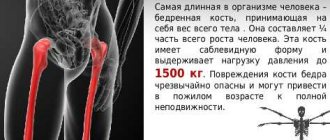To understand whether the human body is developing correctly, scientists have conducted hundreds of thousands of studies and measurements. Over time, they classified this data and averaged out the indicators that occurred most frequently. As a result, it turned out that there is a normal ratio of height and weight in adolescents, young children and adults, found in the vast majority of people in a certain region. Using these indicators, you can find out how healthy a person is, whether he has any abnormalities, and whether they are serious.
Teenage growth chart: height norms for girls and boys
Individual variants of development rates have a wide range associated with body features fixed genetically. When assessing the level of physical development, it is necessary to take into account the physical development of his parents. The formula for calculating the expected final height of a child depending on the height of the parents is presented below. Please note that the result error is +/- 6 centimeters.
Formula for calculating the expected height of a child
As a result of anthropometric examinations of large groups of adolescents, standards and norms of physical development were determined. In the proposed tables, growth indicators are divided into levels, so-called “centiles”.
Growth chart for boys from 12 to 17 years old
Growth chart for girls from 12 to 17 years old
If your child's growth rate is within the green or blue zone - his height corresponds to the average height, the yellow zone indicates that growth is normal, but there is a tendency to lag or advance, this can be discussed at an appointment with the pediatrician. If the growth rate is in the red zone, this may be a sign of a disease, do not delay consulting an endocrinologist.
Physical development and physique are 70% determined by heredity, and 30% by environmental factors.
Detailed assessment, recommendations, problems
The issues of harmonious formation of the future of a man and a woman lie entirely on the shoulders of the parents. A teenager's assessment of their appearance is not always objective, and often leads to far-fetched problems and complexes.
This period requires a more attentive and sensitive attitude towards children from adults. It is advisable to control the changing parameters, and discuss the reasons and ways to resolve the situation together with the child.
Short stature or, conversely, too much body length may be predisposing factors transmitted from close relatives. In this case, therapy is not carried out. In the absence of genetic causes, consultation with a doctor is required. You should not draw conclusions on your own and take drastic measures.
In order to minimize the risks of developmental disorders, it is important to adhere to a number of recommendations:
- establish a complete, balanced diet;
- exclude the use of low-carbohydrate, strict, express diets, only restrictions on fatty and high-calorie foods are possible;
- presence of regular physical activity;
- compliance with the prescribed time for sleep and rest;
- alcohol, tobacco, narcotic psychotropic substances are prohibited.
Be sure to read: Calorie deficit for weight loss: what is it, how to calculate it correctly, optimal indicators
Weight estimation using body mass index
It is possible to determine the proportionality of development using the body mass index formula. In order to calculate BMI, you need to divide your initial body weight by your height (in m) squared.
For example, a child’s height is 143 cm - that’s 1.43 m, weight - 47 kg.
Let's do the calculation: 47 / (1.43*1.43) =22.9
Table No. 7 BMI assessment
| Coefficient | Correspondence of body weight to height | Recommendations |
| Up to 16.5 | Severe exhaustion | If there is a significant weight deficit, an examination is required. |
| 16,6-18,5 | Minor shortage | Adjust your diet, add a vitamin complex. |
| 18,6-25 | Norm | Maintain the regime. |
| 25-30 | Slightly elevated | Reduce consumption of high-carbohydrate foods, increase daily activity: exercise, walking, slow running. |
| 30-35 | Overweight (first degree obesity) | Corrections as prescribed by a doctor. |
| 35-40 | Second degree obesity | |
| From 40 | Severe obesity (3rd degree) |
Growth Estimate
It is recommended to measure the child's height monthly. When comparing the table value with the data on the measuring ruler, correct interpretation of the results is important.
Table No. 8 Assessment of growth indicators
| Very low | A serious sign of delayed physical development. The child must undergo examination. |
| Short | May indicate a lag. Often found among premature babies. |
| Below the average | A slight shortage, but within normal limits. |
| Average | Norm. Typical for most teenagers. |
| Above average | There may be deviations or a hereditary trait. |
| Very tall | Indicates endocrine disorders. Contact your doctor. |
For an objective perception of the results obtained, one should not rely entirely on the tabular formulations. It is important to take into account hereditary factors, lifestyle, and the characteristics of the puberty period, which play a significant role in the formation of a growing person.
Rating by weight
The table coefficients are approximate and are used as a guide.
Table No. 9 Assessment of body weight indicators
| Great underweight | A clear sign of exhaustion. Therapy under medical supervision is required. |
| Short | Indicates a lag. An examination is recommended. |
| Less than average | A little short of normal. The diet needs to be supplemented with healthy foods and microelements. |
| Average | Norm. An indicator of healthy development. |
| Excess weight | There is a risk of obesity. It is important to adjust your diet and increase physical activity. |
| Very big | A clear sign of obesity. Mandatory contact with a nutritionist. |
Even within normal limits, outwardly the body may appear thin or, on the contrary, plump. This depends on the rate of skeletal formation or the ratio of fat and muscle tissue in the body.
Height to weight ratio in teenagers: height and weight table
Growth norms for girls and boys
To assess indicators of physical development, it is important to evaluate not only height separately from other indicators, but also its relationship with weight.
The optimal ratio of height and weight in children and adolescents is presented by the following centile graphs. The method for assessing indicators is similar to the method for assessing centile tables described above: in the range from 3 to 97 centiles we can talk about the norm, everything above or below these values requires the attention of parents and doctors.
Optimal height to weight ratio for boys
Optimal height to weight ratio for girls
Calculation of averages
To understand whether a child’s data corresponds to age standards, it is necessary to take into account a set of anthropometric parameters. Natural physiological processes occurring in the body of every person are of great importance. A growth spurt may well be preceded by a sharp weight gain.
If you look at the tables, you will notice that the height norm is met, but the weight exceeds the limits. There is no need to worry about this, since after 3 months the situation will stabilize.
If a child looks too thin at his height, but no chronic pathologies have been detected and he has a good appetite, then by the end of puberty the proportions will normalize.
When measuring, bone mass should be taken into account. In medicine there is such a term as “heavy bone”. This phenomenon is more often recorded among boys who are overweight, but there are no visual signs of excess weight.
It is forbidden to confuse body weight with volume. Sometimes overweight children can weigh much less than their peers who play sports hard, since fat cells are lighter than muscles.
The weight of an athlete with muscle mass will go beyond the data presented in the table, and a child with excess fat deposits will fall into the category with those indicators that are within the normal range.
Periods of accelerated, intensive growth of a teenager
Periods of accelerated growth in adolescents
With the onset of puberty, there is a significant increase in the linear size of the body and its weight - the so-called pubertal growth spurt occurs. In girls, the growth spurt begins on average at 10.5 years old; height increases most significantly between 11 and 12 years old - the increase in body length can reach 8-10 cm per year. By the age of 13-13.5 years, the rate of increase in height decreases, changes in the ratio of body parts continue. In boys, the period of accelerated growth begins 1-2 years later, at 115-16 years the growth rate reaches a maximum (the increase in height can reach up to 8-9 cm per year), and slows down by 18-19.
Thus, girls “stretch out” earlier and at the age of 11-14 are superior to boys, both in height and in body weight.
The intensity of growth during puberty can be either uniform or spasmodic. In the latter case, the entire annual increase can occur in a few months - more often in the summer-autumn period.
During accelerated growth, there is a significant change in the proportions of a teenager’s body - awkwardness of figure, lankyness, long and thin limbs. This can lead to temporary incoordination of movements. The teenager himself may negatively evaluate such body features, which in turn becomes the cause of negative feelings about his appearance and self-doubt.
Without exception, all physiological functions of an adolescent undergo significant changes during the period of active growth. This can lead to imbalances in individual body systems. In most adolescents, muscle tissue does not keep pace with the growth of the skeleton, and so-called “growing pains” appear. The cardiovascular system also undergoes profound physiological changes, which causes sudden surges in pressure.
Contents: Part 1: What is NORMAL height and weight, and how to determine it. What does height and weight depend on during adolescence? “My height is XXXcm, and my weight is UUkg. This is fine ? » How to use the height and weight chart.
Part 2: For those who want to grow, increase their height. — Proper nutrition: diet, menu. — Tips on food: how and when to eat. — Vitamin and mineral complexes. — Use of hormonal drugs based on growth hormone. — How to sleep correctly — Methodology of A. I. Berg — Methodology of A. N. Tranquillitati — Methodology of M. S. Norbekov — Exercises of V. A. Lonsky. — Swimming is a growth stimulator.
Part 1: What is NORMAL height and weight, and how to determine it.
Currently, the average height for men is 178 cm, for women - 164. Girls grow up to 17 - 19 years old, boys - up to 19 - 22 years old.
Quite intensive growth is observed at the beginning of puberty (this process lasts from 10 to 16 years for girls, from 11 to 17 years for boys). Girls grow fastest between the ages of 10 and 12, and boys between 13 and 16 years of age. Growth fluctuations are known to occur throughout the day. The greatest body length is recorded in the morning. In the evening, height may be 1 - 2 cm less.
The main factors influencing growth are proper nutrition (for growth you need nutrition), adherence to a sleep schedule (you need to sleep at night, in the dark, for at least 8 hours), exercise or sports (an inactive, stunted body - a stunted body).
IT IS IMPORTANT TO REMEMBER that: 1. During adolescence (from 11 to 16 years old) a growth spurt occurs. Those. one person may begin to grow at 11 years old, and by 13 years old grow to his final height, while another at 13-14 years old is just beginning to grow. Some grow slowly over several years, others grow in one summer. Girls begin to grow earlier than boys. 2. This growth spurt is caused by and directly depends on puberty. 3. Often during the growth process, the body does not have time to build muscle mass and gain weight. Or vice versa, first you gain weight, and then your height increases, your body becomes elongated. This is a normal condition and does not require immediate weight loss or weight gain. 4. Losing weight and starving in adolescence is very dangerous, since a growing body, especially the brain, needs resources for growth and development. And an underdeveloped brain is then more difficult to cure than an underdeveloped body.
FOR FAT AND THIN PEOPLE. First of all: WEIGHT and VOLUME are not the same thing. Because MUSCLE WEIGH 4 TIMES MORE FAT with the same volume. In addition, muscles, like fats, there are several types (biology course, grades 8-9). Therefore, if your weight is normal or below normal, and your body looks fat, it’s because there’s a lot of fat and not enough muscle. It will take proper nutrition and physical effort to turn fat into muscle. The weight will not change, and the plumpness will disappear. The same applies to those whose weight is below normal, but the body looks normal, except that the muscles are not visible. Also, if your weight is below normal and looks thin, this is also a lack of muscle mass. This often happens during periods of active growth, when the skeleton grows faster than the muscles. This is normal and will go away on its own if you eat well. I would especially like to mention teenagers, boys and girls suffering from “potbellies”. The reason for the appearance of a “belly” is weakness of the abdominal muscles and poor nutrition. As a result, physical exercise for the abdominal muscles and establishing a diet, eating nutritious and healthy foods, and eating small portions help.
Table of changes in height and weight of a child from 7 to 17 years old (Anthropometric (centile) tables)
In height and weight tables, the division of indicators into “low”, “medium” and “high” is very arbitrary.
- Average height and weight should be within the green and blue values (25-75 centiles). This height corresponds to the average height of a person for the specified age. For those who have not yet mastered the concept of AVERAGE STATISTICAL, I tell you that to calculate average height, data on several million teenagers is taken and the average and other indicators are calculated.
- Growth, the value of which is within the yellow value, is also normal, but indicates a tendency to advance (75-90 centiles) or lag (10 centiles) in growth, and may be due to both characteristics and a disease with hormonal imbalance (more often endocrinological or hereditary). In such cases, it is necessary to bring this to the attention of the pediatrician.
- Growth, the value of which is in the red zone (97th centile) is outside the normal range. In this situation, it is necessary to consult with the appropriate specialists: pediatrician, therapist, endocrinologist, gastroenterologist, geneticist.
How to use the table?
- Boys look for their parameters in the table “Height of boys” and “Weight of boys” And girls - in the table “Height of girls” and “Weight of girls”
- First, in the Height table, we find our age in the left column and in the found line we look for the height corresponding to our age. If the cell is blue, the indicator is ideally average; if it is green, it is not ideal, but the growth rate is normal. If the cell is yellow, it means “there is a tendency to advance or lag” and it would be good to consult with an endocrinologist. If it’s red, you just need to go to an endocrinologist.
- Next, in the Weights table, we find our age in the left column and in the found line we look for the weight corresponding to ours. If the cell is blue, the average indicator is ideal; if it is green, it is not ideal, but the weight indicator is normal. If the cell is yellow, it means “there is a tendency to advance or lag” and it would be good to consult with an endocrinologist. If it’s red, then you need to go to an endocrinologist.
- NOT ALL. Now we need to see whether the height indicator corresponds to the weight indicator. And bring the weight into line.
For example, let's answer the two most frequently asked questions:
1. “I am 14 years old, my height is 151 cm, my weight is 42 kg.
This is fine? Seryozha." In the table “Height: boys” we look for the line with age “14 years” and in this line we find a value that includes the indicator 151 cm.
We see that the indicator falls into the yellow zone, which means growth is below normal. Further in the table “Weight: boys” in the line corresponding to the age of 14 years we find a value that includes the indicator 42 kg. We see that the indicator is in the green zone, which means the weight is normal. Now, please note that the height indicator (low) does not correspond to the weight indicator (average) - this means that either the weight is more than necessary, or at the moment there is a growth spurt and the height and weight simply did not have time to come into agreement. Moreover, the second conclusion is much more likely. 2. “Height 148, weight 41. 12 years old.
Fine? Marina" In the table "Height: girls" we look for the line with age "12 years" and in this line we find a value that includes the indicator 148 cm. We see that the indicator falls into the blue zone, which means growth is normal. Further in the table “Weight: girls” in the line corresponding to the age of 12 years, we find a value that includes the indicator 41 kg. We see that the indicator is in the blue zone, which means the weight is normal. Now pay attention that the height indicator corresponds to the weight indicator. Everything is just perfect. Height of boys from 7 to 17 years (cm)
| Age | Index | ||||||
| very low | short | below the average | average | above average | high | very tall | |
| 7 years | 111-113 | 113-116 | 116-125 | 125-128 | 128-130 | >130 | |
| 8 years | 116-119 | 119-122 | 122-130 | 130-134 | 134-137 | >137 | |
| 9 years | 121-124 | 124-125 | 125-136 | 136-140 | 140-143 | >143 | |
| 10 years | 126-129 | 129-133 | 133-142 | 142-146 | 146-149 | >149 | |
| 11 years | 131-134 | 134-138 | 138-148 | 148-152 | 152-156 | >156 | |
| 12 years | 136-140 | 140-143 | 143-154 | 154-159 | 159-163 | >163 | |
| 13 years | 141-145 | 145-149 | 149-160 | 160-166 | 166-170 | >170 | |
| 14 years | 148-152 | 152-156 | 156-167 | 167-172 | 172-176 | >176 | |
| 15 years | 154-158 | 158-162 | 162-173 | 173-177 | 177-181 | >181 | |
| 16 years | 158-163 | 163-166 | 166-177 | 177-182 | 182-186 | >186 | |
| 17 years | 162-166 | 166-171 | 171-181 | 181-186 | 186-188 | >188 | |
Weight of boys from 7 to 17 years (kg)
| Age | Index | ||||||
| very low | short | below the average | average | above average | high | very tall | |
| 7 years | 18,0-19,5 | 19,5-21,0 | 21,0-25,4 | 25,4-28,0 | 28,0-30,8 | >30,8 | |
| 8 years | 20,0-21,5 | 21,5-23,3 | 23,3-28,3 | 28,3-31,4 | 31,4-35,5 | >35,5 | |
| 9 years | 21,9-23,5 | 23,5-25,6 | 25,6-31,5 | 31,5-35,1 | 35,1-39,1 | >39,1 | |
| 10 years | 23,9-25,6 | 25,6-28,2 | 28,2-35,1 | 35,1-39,7 | 39,7-44,7 | >44,7 | |
| 11 years | 26,0-28,0 | 28,0-31,0 | 31,0-39,9 | 39,9-44,9 | 44,9-51,5 | >51,5 | |
| 12 years | 28,2-30,7 | 30,7-34,4 | 34,4-45,1 | 45,1-50,6 | 50,6-58,7 | >58,7 | |
| 13 years | 30,9-33,8 | 33,8-38,0 | 38,0-50,6 | 50,6-56,8 | 56,8-66,0 | >66,0 | |
| 14 years | 34,3-38,0 | 38,0-42,8 | 42,8-56,6 | 56,6-63,4 | 63,4-73,2 | >73,2 | |
| 15 years | 38,7-43,0 | 43,0-48,3 | 48,3-62,8 | 62,8-70,0 | 70,0-80,1 | >80,1 | |
| 16 years | 44,0-48,3 | 48,3-54,0 | 54,0-69,6 | 69,6-76,5 | 76,5-84,7 | >84,7 | |
| 17 years | 49,3-54,6 | 54,6-59,8 | 59,8-74,0 | 74,0-80,1 | 80,1-87,8 | >87,8 | |
Height of girls from 7 to 17 years (cm)
| Age | Index | ||||||
| very low | short | below the average | average | above average | high | very tall | |
| 7 years | 111-113 | 113-116 | 116-124 | 124-128 | 128-131 | >131 | |
| 8 years | 116-119 | 119-123 | 123-131 | 131-134 | 134-137 | >137 | |
| 9 years | 122-124 | 124-128 | 128-137 | 137-140 | 140-144 | >144 | |
| 10 years | 127-130 | 130-134 | 134-142 | 142-146 | 146-151 | >151 | |
| 11 years | 131-136 | 136-140 | 140-148 | 148-153 | 153-157 | >157 | |
| 12 years | 137-142 | 142-145 | 145-154 | 154-159 | 159-163 | >163 | |
| 13 years | 143-148 | 148-151 | 151-159 | 159-163 | 163-168 | >168 | |
| 14 years | 147-152 | 152-155 | 155-163 | 163-167 | 167-171 | >171 | |
| 15 years | 150-154 | 154-157 | 157-166 | 166-169 | 169-173 | >173 | |
| 16 years | 151-155 | 155-158 | 158-166 | 166-170 | 170-173 | >173 | |
| 17 years | 152-156 | 156-160 | 160-169 | 169-170 | 170-174 | >174 | |
Weight of girls from 7 to 17 years (kg)
| Age | Index | ||||||
| very low | short | below the average | average | above average | high | very tall | |
| 7 years | 17,9-19,4 | 19,4-20,6 | 20,6-25,3 | 25,3-28,3 | 28,3-31,6 | >31,6 | |
| 8 years | 20,0-21,4 | 21,4-23,0 | 23,0-28,5 | 28,5-32,1 | 32,1-36,3 | >36,3 | |
| 9 years | 21,9-23,4 | 23,4-25,5 | 25,5-32,0 | 32,0-36,3 | 36,3-41,0 | >41,0 | |
| 10 years | 22,7-25,0 | 25,0-27,7 | 27,7-34,9 | 34,9-39,8 | 39,8-47,4 | >47,4 | |
| 11 years | 24,9-27,8 | 27,8-30,7 | 30,7-38,9 | 38,9-44,6 | 44,6-55,2 | >55,2 | |
| 12 years | 27,8-31,8 | 31,8-36,0 | 36,0-45,4 | 45,4-51,8 | 51,8-63,4 | >63,4 | |
| 13 years | 32,0-38,7 | 38,7-43,0 | 43,0-52,5 | 52,5-59,0 | 59,0-69,0 | >69,0 | |
| 14 years | 37,6-43,8 | 43,8-48,2 | 48,2-58,0 | 58,0-64,0 | 64,0-72,2 | >72,2 | |
| 15 years | 42,0-46,8 | 46,8-50,6 | 50,6-60,4 | 60,4-66,5 | 66,5-74,9 | >74,9 | |
| 16 years | 45,2-48,4 | 48,4-51,8 | 51,8-61,3 | 61,3-67,6 | 67,6-75,6 | >75,6 | |
| 17 years | 46,2-49,2 | 49,2-52,9 | 52,9-61,9 | 61,9-68,0 | 68,0-76,0 | >76,0 | |
Part 2: For those who want to grow, increase their height.
Question: Is it possible to increase your height without surgery? Answer: Yes, with the help of exercises for growth zones you can become 5-10 cm or more taller. Question: Where to start, what do you need to become taller? Answer: To become taller you need “iron confidence” in yourself and future success, as well as strength, physical and psychological! It will take a lot of strength and even more patience.
Proper nutrition.
Proper nutrition is the basis for increasing height. What food promotes growth, what food stimulates growth?
Menu
: Breakfast is the main meal of the day. After sleep, the body is at its most stretched and relaxed, and it is very important to do a little exercise before breakfast. In the morning, the body best absorbs nutrients. That's what we need.
So, for breakfast, eat only grain products (cereals). This:
- PORridge (buckwheat; oatmeal and rolled oatmeal; pearl barley; corn; millet; rice.) Better with milk. PS Porridge does not make you fat.
Omelette or boiled eggs are also suitable for breakfast, but not every day. - Bread (whole grain).
- Tea, cocoa, milk.
Unfortunately, dry crispy flakes, stars, rings, which need to be filled with milk, do not contain nutritional substances to increase growth.
They do not stimulate growth in any way and can be added to your diet only for variety. Dinner. The daily diet should contain as much plant and protein foods as possible.
- Vegetables and fruits (carrots; peas; beans; beans; nuts; dill; tarragon; savory; basil; marjoram; lettuce; spinach; parsley; celery; onions; rhubarb; corn; bananas; oranges; strawberries; cranberries; blueberries). You need to eat at least a kilogram of vegetables and fruits per day.
- Soups and broths (Soups and broths themselves do not stimulate your growth, but they activate the metabolism in the body, which is important. PS Do not add “broth cubes” to the soup, because they do not contain anything nutritious or useful.)
- Meat (Pork, beef, veal, etc., preferably boiled. Once every 2 days)
- Dairy products (kefir; cottage cheese; cream; milk; sour cream; cheese)
- Liver, kidneys.
- Fish (preferably boiled. 1 time every 2 days)
- Poultry (Chicken, turkey. Do not eat the skin.)
- Juice (carrot, orange) or compote.
- Bread (whole grain).
Dinner. You can't sleep hungry! - Remember this. If you want to increase your height, then you need to eat well an hour or two before bedtime. Here's what to eat in the evening:
- Dairy products (kefir; cottage cheese with honey; cream; milk; sour cream; cheese)
- Eggs (boiled). Every day before bed.
- Fresh fruits and vegetables
In order for products to retain more active substances useful for increasing growth, they need to be fried less, but better boiled or steamed!
If you have allergies, etc. for some products, you can choose alternatives. The diet for the near future is ready.
And finally, a recipe for an effective drink to increase height: To prepare it you will need 2 glasses (200 ml each) of milk (2.5-3.5%) and one fresh, raw egg (chicken or quail). Take one egg for two glasses of milk and shake the resulting mixture well with a mixer or blender. 400-500 ml. Drink this cocktail 3 times a day. The results are excellent.
Proper nutrition will not increase height without exercise, and vice versa. This has been proven, this is a fact.
What slows down growth.
Now about what “slows down” growth growth
, and what to avoid.
1) Alcohol and smoking. Completely exclude!!! Even on holidays. Alcohol is the first thing that prevents you from growing up, just like smoking (hookah too). If you smoke or drink alcohol, quit this thankless task now. 2) Sweet carbonated drinks (in addition to the fact that they do not contain anything useful, they have added thirst enhancers). 3) Fast food, chips, crackers, etc. and so on. Impair liver function. ...And that's not all.
Tips on food for those who want to increase their height.
I'll make a few clarifications on nutrition. It's up to you to accept them or not. But to increase growth, some tips listed below are simply necessary to follow.
1) Take the time to chew your food well. You need to chew food slowly and thoroughly. In a quiet environment. Since by thoroughly chewing food: the gums are strengthened, the load on the heart is reduced, the proper amount of saliva and digestive juices are produced in the stomach, etc.
2) Have a good breakfast in the morning! We are constantly told that we need a light breakfast in the morning - this is wrong. During breakfast, the stomach is more inclined to accept larger amounts of food than during the day. If, after sleep, you don’t feel like eating at all, there is bad breath and an unnatural-colored tongue, this only means one thing - you have digestive problems. Stop eating sandwiches for breakfast and start eating porridge before it’s too late. Also, in this case, I recommend switching to two meals a day. Also, make sure you eat more food during breakfast compared to other meals.
.
3) Meals should be regular. Don't skip meals. At least twice a day and no more than four. The stomach should rest. Therefore, at least four hours should pass between meals. This time is needed for your body to absorb all the nutrients from processed food and produce enough gastric juice to digest the next portion.
4) The diet should be varied. For example, you can’t eat dumplings alone for the whole week. In general, try not to repeat the dish several days in a row.
5) Avoid: cookies, candy, chips, soda... Anything that has little or no nutritional value.
6) Beware of salt consumption. Constantly exceeding the daily norm (3 grams) of salt can lead to disruption of metabolic processes in the body. In addition, excess salt in the human diet depletes bone tissue. That is, sodium chloride accelerates the removal of calcium from your body. This is important to remember not only for those who want to grow up.
7) Eat more raw vegetables and drink plenty of fresh juices. Vitamins are best preserved in this form.
 Drink six to eight glasses (200 ml) of water and/or fruit and vegetable juice per day. From juices, give preference: orange, carrot, tomato, grapefruit. Sugarless.
Drink six to eight glasses (200 ml) of water and/or fruit and vegetable juice per day. From juices, give preference: orange, carrot, tomato, grapefruit. Sugarless.
9) Drink milk. For the formation of bone tissue and, accordingly, increased growth, calcium is necessary. Which is found precisely in milk. What kind of milk should you drink? Goat's milk is absorbed almost immediately after ingestion. This happens thanks to the correct proportions of proteins, fats and carbohydrates. You should not drink raw goat milk. Causative agents of all kinds of diseases are often found in it. It needs to be boiled. Cow's milk is not as easily digested as goat's milk, but it can also benefit you.
10) After each meal you should rest. Do not start physical work immediately after eating. Optimal time to rest after eating: 30-60 minutes.
11) Eat vitamin supplements every day. Vitamins and minerals are not always found in the food we eat. Therefore, it is very advisable to add vitamin-mineral complexes to your diet.
Vitamin and mineral complexes to increase height
Vitamin and mineral complexes are extremely important, because almost all people living in megacities have vitamin deficiencies. This happens because food grown on our “modern” soils is deprived of many microelements, and as a result, vitamins! Simply put, the foods you eat do not contain any beneficial substances to stimulate growth.
Don't be afraid, there is a way out! Vitamin and mineral complexes. A good alternative. There are a huge number of them, for different problems (and for increasing height too), but most of them have the same goal - to normalize the balance of vitamins and minerals in your body. I cannot say which vitamins will help stimulate growth specifically for you, because... all people are different. Below are several of the most popular, best, in my opinion, vitamin-mineral complexes today (the approximate cost is indicated in parentheses). “Calcemin Advance” “Calcium Sandoz Forte” “Berlamin Modular, Berlin-Chemie” “Natekal D3” “ELKAR solution for internal. intake 20%" "Iodomarin 200, Berlin-Chemie"
These complexes have been proven and are very helpful in stimulating growth. I don’t recommend using them at the same time (have mercy on your liver), so there are two ways: either try all these drugs in turn, or go to the doctor and pick up a complex along with it. I repeat once again that people are different and what suits one may not suit another.
Preparations containing growth hormone.
Modern science gives the opportunity to grow up for those young people whose growth zones have not yet closed. Basically, methods of hormonal influence on the body, psychological suggestion, and nutrition are used. Instilling a growth mindset promotes the release of samatropin, a growth hormone, by the pituitary gland.
The use of hormonal drugs in combination with other measures can change the situation. However, parents don't always want their child to take hormones. In addition, with closed growth zones, when there is no source for bone tissue growth, the use of somatotropin is not only pointless, but can cause harm to the body.
Now available medications containing recombinant growth hormone allow you to gain 1-2 cm in height per year. However, they are effective in cases of congenital pathology of the pituitary gland and have a number of side effects. Their use can cause acromegaly (enlargement of the hands, ears, nose, etc.), and taking them after puberty (after 18-20 years) does not affect growth. Active growth stops after puberty.
How to sleep properly
Proper, sound and healthy sleep is one of the key conditions for increasing growth, because a person grows in his sleep. It is during deep sleep that the body most actively produces growth hormone, which makes you taller and stronger, lengthens and thickens your bones. Actually, the rules of healthy sleep will be discussed below. 1) You need to sleep in a room where it is dark, quiet and fresh
. Most of us live in megacities, where there is a high noise level, where it is light even at night and the air cannot be called fresh. We are used to all this, but it still affects our sleep. Therefore, earplugs, air conditioning and curtains made of thick fabric are the first things you need to have for a sound sleep.
2) The sleeping area should be well ventilated.
If there is no air conditioning, open the window. Don't be afraid to open the window even in winter. It is better to cover yourself with extra woolen blankets than to breathe stale air.
3) Hard bed
will provide comfort to your spine. A bed that is too soft, on the contrary, will not allow you to get a good night's sleep. If your bed is too soft, you can put several sheets of plywood under the mattress.
4) Don't sleep on oversized pillows.
Scientists advise
sleeping without a pillow
. Since in this case there is no disruption of blood circulation in the spinal cord, and improved cerebral circulation normalizes intracranial pressure. To increase height and healthy sleep, it is better to sleep on your back, placing a pillow not under your head, but under your bent knees. This situation is not easy to get used to, but the benefits from it are much greater.
5) Nightwear and sheets should be nice and clean.
Therefore, make sure that your bedding makes you happy. Sound, healthy sleep and a gray-dirty bed are incompatible concepts, scattered socks and a cozy atmosphere are also incompatible.
6) Try not to curl up into a ball while sleeping. Don't tuck your knees to your chest or your elbows to your knees. This makes it difficult for air to flow into the lungs. You need to sleep as straight as possible. Stretched out.
7) The same scientists claim that six to eight hours of sleep is quite enough for an adult.
However, some people need five hours of sleep per night, while others need ten hours of sleep. During growth or adolescence, the body requires more sleep. So: For 1-10 years old, it is enough to sleep 10-15 hours; At 11-15 years old, it is enough to sleep 9-11 hours; At 16-25 years old, 7-9 hours of sleep is enough.
 Drink a glass of water before bed
Drink a glass of water before bed
. Drinking warm milk at night will help you fall asleep faster.
Important: DO NOT eat heavy food, smoked, fried, sweet, etc. before going to bed, or drink coffee, strong tea, highly carbonated drinks, etc. ! After such a meal, a person’s sleep will definitely not be healthy.
9) To fall asleep better, you need to set a fixed bedtime.
Time to wash, calm down, forget about all the problems and get ready to relax. To get into a calm state and calm down, complete the following task.
Relaxation and breathing. Close your eyes and relax. Make every part of your body completely relaxed. From head to toe. Now a little breathing exercise: - Inhale slowly and deeply through your nose (10 sec.); — Hold your breath (3 sec); - Exhale slowly and completely through your mouth while tightening your abdominal muscles (13 sec.). Repeat if necessary.
The sound of pulsating blood also helps you relax and fall asleep. Start counting your pulse. This method is much more effective than mental arithmetic.
10) In conclusion, I would advise against staying up all night. Shaolin monks, for example, who are distinguished by their health and strength, follow a strict schedule: 21.00 - go to bed, 7.00 - wake up. Not a minute later. They found that during this period the body is completely restored.
Height Increasing Techniques
Methods and exercises to increase height
, tested and show amazing results! But not 100%. The results largely depend on the character of the person. Only purposeful and strong-willed people are able to become taller. Results will appear in a few months with daily(!) training.
Berg's technique.
It has always been believed, and scientists never tired of repeating this, that a person’s height can only be increased up to 20 years. Recently, this fact has been called into question. This happened largely thanks to Dr. Alexander Berg. He proved that you can grow even after 25 and 30 years, because... Every person has reserves to increase height by 6-8 cm. His technique for increasing height is aimed at awakening these reserves. Berg's technique is simple and unique. It has been experienced by many people who want to grow.
Description: All exercises must be repeated 15-20 times. Start classes 2 hours after meals. For full results, you will need a mat with spikes and exercise equipment.
Answers to popular questions using the Berg method.
When performing the Berg technique, is it worth seeing a doctor?
(surgeon, endocrinologist) “ If the doctor is good (professional), then it won’t get any worse!I would like to increase my height by at least 10 cm. When achieving this goal, can I stop all exercises or do I need to do it constantly? Will I have gains that won't subside? »
It depends on many factors. From you. In general, if a person can grow by 5 cm or more, then such growth is usually maintained (and further implementation of the technique will not be necessary). 2cm or less is unlikely.
In 3 days I became 2 cm taller, but then I stopped exercising and the 2 cm came back. Why? »
You need to borrow constantly (daily), because... the spine sags. No 10-15 workouts will increase your height; they will stretch the spine, but will not change the overall picture.
How to perform the exercises described in Berg's method? Do they all need to be performed at once, or step by step - first the first complex, after some time - the other? »
Start with one complex per day. After the first month, you can gradually increase the training duration and load.
Does the length of the body increase proportionally or only the spine? »
Differently. Depends on the characteristics of the person. At older ages (after 24 years), usually only the length of the intervertebral discs increases.
Can you tell me, after a set of these exercises, I also do strength exercises (push-ups, squats, dumbbells, etc.), will this negatively affect the result? »
It is believed that strength exercises inhibit bone growth in length and increase it in width. In any case, it is better not to perform exercises with a barbell or dumbbells, especially while standing.
I still don’t understand whether these exercises only straighten the spine or also promote bone growth? »
Exercises straighten the spine and stimulate bone growth.
Methodology of A. Tranquillitati
Tranquillitati Alexandra Nikolaevna is an Honored Doctor of the RSFSR, a recognized authority in the field of physical therapy. A. Tranquillitati’s technique, originally created for people who suffer from pain in the back, neck, and head, not only improves health, but also significantly increases growth. “This occurs due to an increase in the length of the disc between two vertebrae. Some exercises from the technique actually force the spine to take unnatural shapes. Therefore, I can admit that regular repetition of these exercises can increase the length of the spine or the entire body,” this is how Alexandra Nikolaevna Tranquillitati explained it.
Description: To begin with, I’ll say that complex simulators like Berg’s are really not needed here. You will need a gymnastic wall (several sticks attached at a distance of 8 - 10 cm) and a gymnastic board (with small supports to secure it to the gymnastic wall). The file with the methodology contains all the drawings of the necessary equipment.
Now some tips for those who want to increase their height using this method: 1) The best results will be when training is combined with regular basketball, swimming, tennis, volleyball, football and other sports games. 2) Go to a doctor, under whose supervision your exercises will be most successful. This point is not “for show”. A. Tranquillitati exercises can harm some people. 3) You need to train 1.5-2 hours before or after meals. And 1.5-2 hours before bedtime. 4) Gradually increase the load. Start with one workout a day, doing half or a third of all exercises. In the first 1.5-2 months, the doctor recommends setting the duration of classes to 10-15 minutes, then increasing the number of repetitions, and accordingly, the time to 50-60 minutes or more. 5) After training, within 3 minutes, you need to take a warm shower. 6)Only daily, hard training will bring you success.
Norbekov's technique
Mirzakarim Sanakulovich Norbekov is a famous psychologist, academician, and author of an educational and health system. Norbekov’s technique is a set of exercises to increase height by increasing cartilage between the vertebrae of the spine and by irritating the tubular bones of the legs.
According to the author of the technique M.S. Norbekov
:
“After 7-8 days of training, all patients note an increase in height from two to ten or more centimeters. Of course, a person himself does not grow from exercise. It’s just that a person acquires his natural shape and flexibility by restoring the elasticity of the intervertebral discs.”
.
The only rule when performing the technique is regularity (minimum - once a day for 1 hour, normally - in the morning and evening for 45 minutes).
Some tips on the technique:
- Don't get ahead of things. In the first three to four days, do not make final conclusions about yourself, your capabilities and this technique.
- Do not talk or be distracted while doing the exercises.
- Don't overexert yourself. A sign of malfunction is a feeling of heaviness in the head.
- Do not doze while doing the exercises; drowsiness is unacceptable.
- You can't exercise when you're tired and hungry.
- Any excuses for your laziness and passivity are unacceptable.
Exercises by V. A. Lonsky
Is it possible and how to become taller? Short stature is just a malfunction of the hormonal system and, most importantly, it can be changed for the better with the help of exercises for growth zones. This is what you and I will do with the help of exercises by Viktor Alekseevich Lonsky.
Description: 1) Warm-up run, 10 min. 2) Leg swings (10 times with each leg), bends (back and forth 10 times and left and right 8 times), splits (2 min.), circular movements of the arms, elbows and hands (10 times each). 25 minutes are allotted for the exercises. 3) Exercise on the bar, hang for 2 minutes (4 sets of 30 seconds, 2 of them with heavier weights (up to 10 kg). Additional weight is tied to the legs.) 4) Hang on the bar upside down for 1-2 minutes. The legs and feet are firmly secured with special straps. (4 approaches of 20 seconds, 1 of them with a weighted weight (from 5 kg), press an additional load to the chest) 5) High jumps. Push with all your might, i.e. jump as high as possible. (2 times 12 jumps on each leg, 3 times 12 jumps on two legs.) 10-15 minutes are allotted for the exercise. 6) Climbing up a hill (40 meters) or up and down the stairs. (5 times) When descending, relaxing. 7) 4 times a week, in the evening, you need to stretch yourself using rubber cords. (5-10 min.) Tie one cord to your legs, the second under your arms. The belts pull in opposite directions. Lessons in the pool 4 times a week (40 minutes each) When swimming, stretch your arms and legs as much as possible, performing various stretches. 9) basketball or volleyball 3 times a week (30 minutes each). Play, trying to win all the top balls. 10) Per day, exercises for growth take 2 hours (an hour in the morning and an hour in the evening). You need to jump at least 100-200 times a day!
2) Leg swings (10 times with each leg), bends (back and forth 10 times and left and right 8 times), splits (2 min.), circular movements of the arms, elbows and hands (10 times each). 25 minutes are allotted for the exercises. 3) Exercise on the bar, hang for 2 minutes (4 sets of 30 seconds, 2 of them with heavier weights (up to 10 kg). Additional weight is tied to the legs.) 4) Hang on the bar upside down for 1-2 minutes. The legs and feet are firmly secured with special straps. (4 approaches of 20 seconds, 1 of them with a weighted weight (from 5 kg), press an additional load to the chest) 5) High jumps. Push with all your might, i.e. jump as high as possible. (2 times 12 jumps on each leg, 3 times 12 jumps on two legs.) 10-15 minutes are allotted for the exercise. 6) Climbing up a hill (40 meters) or up and down the stairs. (5 times) When descending, relaxing. 7) 4 times a week, in the evening, you need to stretch yourself using rubber cords. (5-10 min.) Tie one cord to your legs, the second under your arms. The belts pull in opposite directions. Lessons in the pool 4 times a week (40 minutes each) When swimming, stretch your arms and legs as much as possible, performing various stretches. 9) basketball or volleyball 3 times a week (30 minutes each). Play, trying to win all the top balls. 10) Per day, exercises for growth take 2 hours (an hour in the morning and an hour in the evening). You need to jump at least 100-200 times a day!
Swimming is an excellent stimulator of human growth
Swimming improves breathing (good for the cardiovascular system), expands the chest and shoulders, and increases activity. When swimming, all the muscles of the body, one way or another, begin to work, stretching the spine and individual muscles of the body. What you need to increase your height.
Breaststroke is the best swimming style for increasing height.
Breaststroke allows you to expand and enlarge your muscles and spine through sweeping movements of your arms and legs in the water. When swimming breaststroke, stretch your arms and legs as much as possible, then completely relax your muscles (you can just lie on the water). Tags: teenager height weight development norms
Small height of a teenager: how to increase?
Short stature of a teenager
Short stature of a teenager can be genetically determined, that is, it can be a variant of the norm.
To distinguish genetic short stature from short stature caused by other causes, it is necessary to take into account the height of the adolescent's parents, analyze the growth curve and determine bone age.
- Plotting a growth curve provides a more complete picture than comparing single measurements to average growth rates. If the child’s growth curve in all age periods is located below the optimal curve, and at the same time parallel to the lower limit of the normal curve, then most likely we are talking about genetic short stature
- Information about bone maturation is provided by x-rays of growth plates. For this purpose, in children over 2 years of age, an x-ray of the left hand and wrist is taken, from which the doctor can determine bone age. Normally, the condition of the bones should correspond to the age of the child
Short stature, not associated with genetic predisposition, can be caused by the following reasons: • insufficient nutrition in general or deficiency of some of its components (vitamins, microelements), impaired digestion and absorption in the intestines • excessive physical activity • various chronic diseases • chromosomal abnormalities • hormonal disorders
A detailed medical examination will help determine the cause of a teenager’s short stature; first of all, attention is paid to the state of the endocrine, cardiovascular systems, kidneys and liver. Treatment for short stature is determined by the doctor and depends on the identified cause of the disease.
Useful tips for parents
A child’s normal weight is the key to his future health, so it is important to maintain it. You can prevent obesity by adhering to a healthy lifestyle and nutritional culture. Some useful tips will help with this:
- The whole family should have a healthy diet; parents are an example for the child, the norm by which he or she is guided in life. Give preference to low-fat foods; vegetables and fruits should be included in the diet in sufficient quantities. Try to minimize the consumption of fast carbohydrates and “harmful foods” (chips, soda, fast food).
- Physical activity should be an integral part of life. Even under heavy loads, find time to exercise or jog.
- Let children be involved in planning and preparing meals to keep them interested.
- Do not reward good behavior or merit with sweets, they should not be an incentive.
- Remember that your child may be full; do not force him to finish eating if he says he is full.
- Do not try to put a complete ban on everything sweet and harmful, this will lead to child rebellion. Set the measure.
Tall teenagers
Tall Adolescent Height
Tallness is considered less of a problem for a teenager than short stature, and is sometimes seen as an advantage.
Constitutional-hereditary, or genetic tall stature is caused by the high growth of parents or immediate relatives, is considered the norm and does not require any treatment. In this case, the teenager:
- growth rates correspond to normal rates in all age periods (this can be seen when plotting a growth curve)
- bone age corresponds to chronological
- there are no pathological symptoms of the central nervous system or endocrine glands
If a teenager’s high stature is not associated with heredity, it is necessary to pay attention to his health, first of all, to the condition of the endocrine organs. Another reason for the high growth of a teenager is chromosomal genetic abnormalities. In such cases, it is necessary to seek medical help for diagnosis and necessary treatment.
Recommendations by age
If you see that the child does not correspond to normal weight, your pediatrician confirmed your fears, then you should not hesitate, but begin to correct the indicator. Otherwise, the situation may worsen, and in addition to excessive stress on the body, the child will develop psychological problems: complexes, self-rejection, isolation, and a depressed state.
When correcting weight, it is important to approach the issue taking into account the age characteristics of the child, namely:
- Before 12 months, people rarely talk about obesity, but bottle-fed babies have less control over their hunger and may gain more than they need. Control the amount of formula you eat, do not overfeed your baby, and do not give enriched formulas unless necessary.
- Before the age of five, eating habits are formed; they depend on the approach of the parents. Offer a variety of healthy foods, light snacks in the form of fruits, bread, and dairy products. Encourage your children to be active, try to find a sporting hobby for them that they like.
- At school age up to 12 years, the main tools for weight loss are sports sections and proper nutrition. Try to keep track of what your child eats outside the home, engage in physical training, exercise should be daily.
- After 13 years, children are dependent on social opinion; they are drawn to walks with fast food and soda. Try offering healthier alternatives such as homemade sandwiches or wraps, baked potatoes, etc.
- At any age, remember that you are an example. If you play sports, eat healthy and varied foods, and spend little time on the computer or TV, your child will adopt your habits. And the likelihood of being underweight or overweight if you live a healthy lifestyle is minimal.
When assessing weight, remember that all children are individual. Do not blindly follow the tables, because exceeding the norm may be explained by the presence of high-quality muscle mass, not fat. Do not put pressure on your child, adjust your diet and habits carefully, without offending your child or instilling in him weight-related complexes. The right example and healthy habits will quickly yield results.
Growth vitamins for teenagers
Growth vitamins for teenagers
As we noted above, during the period of active growth, the importance of good nutrition is very high. Vitamins are necessary for the functioning of enzymes that regulate biochemical processes in the body. Each of the vitamins is “responsible” for its own “section” of metabolic processes, which is why there are several dozen diseases caused by vitamin deficiencies.
Norms of daily vitamin intake for children and adolescents
Norms of daily vitamin intake for children and adolescents
Skinny girls
Many parents believe that being underweight
is not a bad thing; the child is not at risk of obesity and lack of attention from the opposite sex.
However, a lack of mass is no less dangerous
than its excess.
Dramatic weight loss doesn't happen just like that. There are medical problems
that lead to underweight even in those adolescents who eat normally: various diseases of the gastrointestinal tract that impair the absorption of nutrients, disruption of the endocrine glands, and even the presence of parasites in the body.
Weight deficit is also observed in those adolescents who have already acquired bad habits: smoking, addiction to alcohol, or the habit of spending sleepless nights at the computer. But often teenagers themselves are undernourished
- due to serious stress or in an attempt to meet beauty standards.
Even if a teenager does not have extra pounds, the ways of self-esteem inherent in this age can lead to an overly critical attitude towards one’s figure and attempts to correct it. It all starts with “quick” and unbalanced diets. “Teenage girls constantly losing weight is a problem that begins with dieting and can then develop into a mental illness. Unfortunately, in recent years we have often seen the development of anorexia nervosa
among girls aged 15–18,” explains Tatyana Shapovalenko, chief physician of the Treatment and Rehabilitation Center of the Russian Ministry of Health and Social Development.
A growing body does not receive enough vitamins and entire groups of nutrients and is forced to slow down its development. In adolescents, muscle mass decreases, bone growth, sexual development, and brain function may be affected. All these changes lead to chronic diseases
and require long-term treatment.
Exercises for growing a teenager's body
Many teenagers and their parents are very worried about short stature and are ready to do anything to “grow up,” including such radical measures as taking hormonal medications or surgery. There is a way to speed up the growth of a teenager’s body without the risk of complications or side effects from taking various drugs - this is physical training.
- Swimming, volleyball, basketball, cycling - these sports help accelerate growth
- It is also important to monitor your posture throughout the day - do not slouch when walking or sitting at a table. To sleep, you need to choose an orthopedic mattress and pillow
Posture of a teenager - Exercises on the horizontal bar. A simple hang will be effective if you do it daily, in several approaches. In total, you need to hang from 4 to 10 minutes per day
- Stretching exercises or yoga classes will help make your spine flexible, strengthen your muscles and awaken your body’s strength.
Here are some effective exercises for growth. They must be done regularly, preferably in the morning, and hold in each pose for 3-6 breathing cycles.
Pigeon pose
Warrior Pose
Cobra pose











